As we’ve navigated our way through this period of isolation, I see that many people have had some sort of faithful companion along with them, whether a floppy-eared Irish Setter, or cat constantly on their lap. My sidekick, as it were, has been the Quad Vena II Play integrated amplifier, powering my two-channel system, functioning at times as a Jack-of-all-trades piece.
The Vena II Play ($1,495) is 45 watt per channel (at 8 ohms) stereo integrated amplifier, and that power section has proven plentiful in driving my Usher SD-500 bookshelf loudspeakers. Somewhat narrower than a standard component at just 12” wide and finished in a smoke grey, the Quad makes an elegant statement, with its single row of buttons leading to a large rotary volume control. This volume control is surrounded by LEDs, marking volume level.
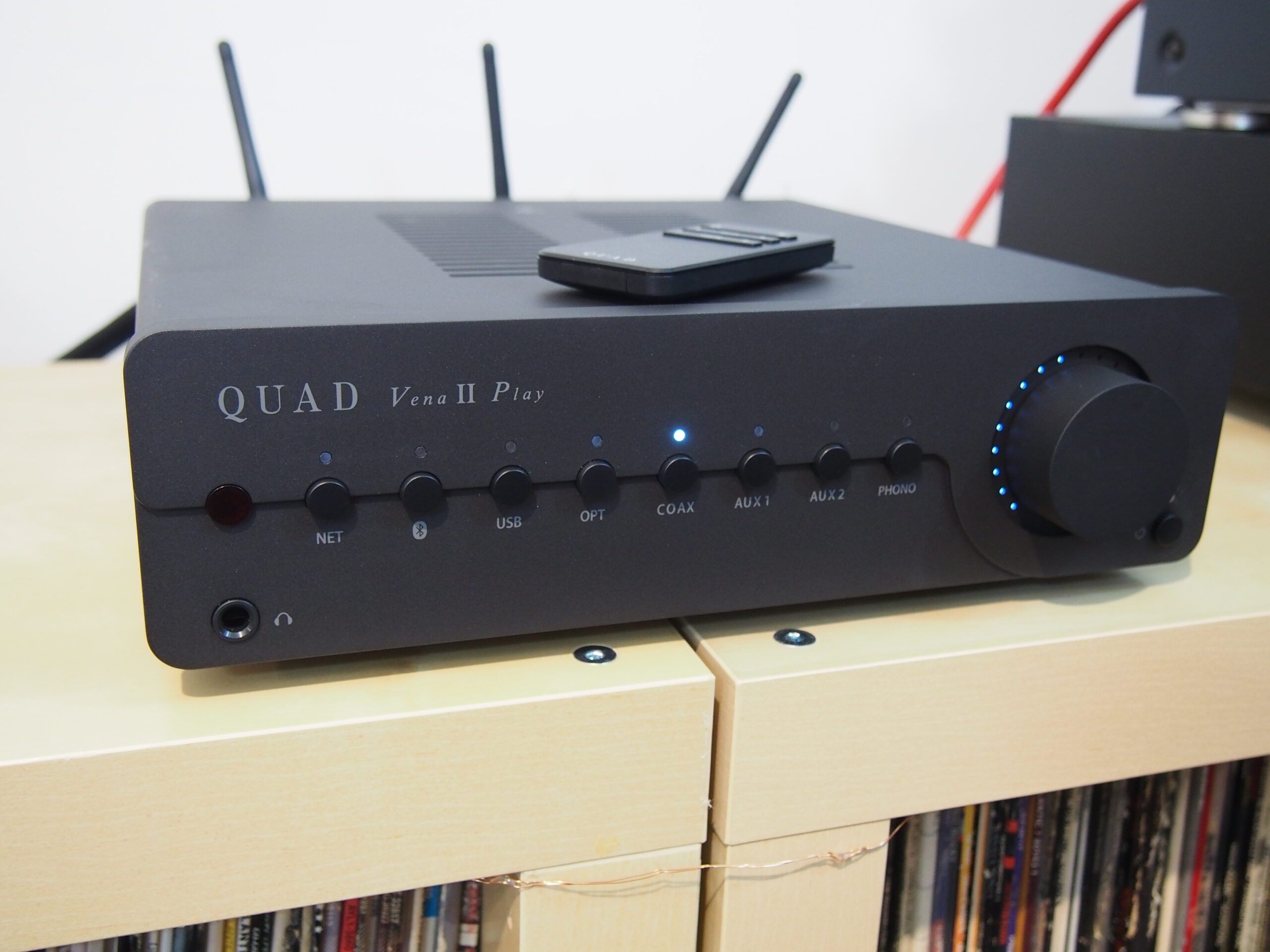
Where the Vena II Play truly makes its mark is by doing a lot of heavy lifting in a relatively small box. There are inputs for analog line level, three digital inputs (coax, optical, and USB), and phono input, Bluetooth, as well as a wireless network connection. There is a preamplifier output, allowing for the use of an external power amplifier, or as I utilized it, a subwoofer. Also featured on the front panel is a ¼” headphone jack. Included is a small, but purposeful, remote control that governs functions such as source change and volume up/down. Three antennae (included) can be attached to the rear panel for wireless reception.

Now, there is a tremendous amount to cover with this product, so if y’all don’t mind, I’m going to jump right into it.
The Digital Realm
Perhaps the best place to begin is the built-in DAC and the three digital inputs. The Vena II Play utilizes the ESS Sabre32 ES9018K2M chip, sampling 44.1kHz-192kHz in the optical, coaxial, ethernet, and Wi-Fi inputs, and up to 384kHz(PCM)/DSD64, DSD128, and DSD256 in the USB input.
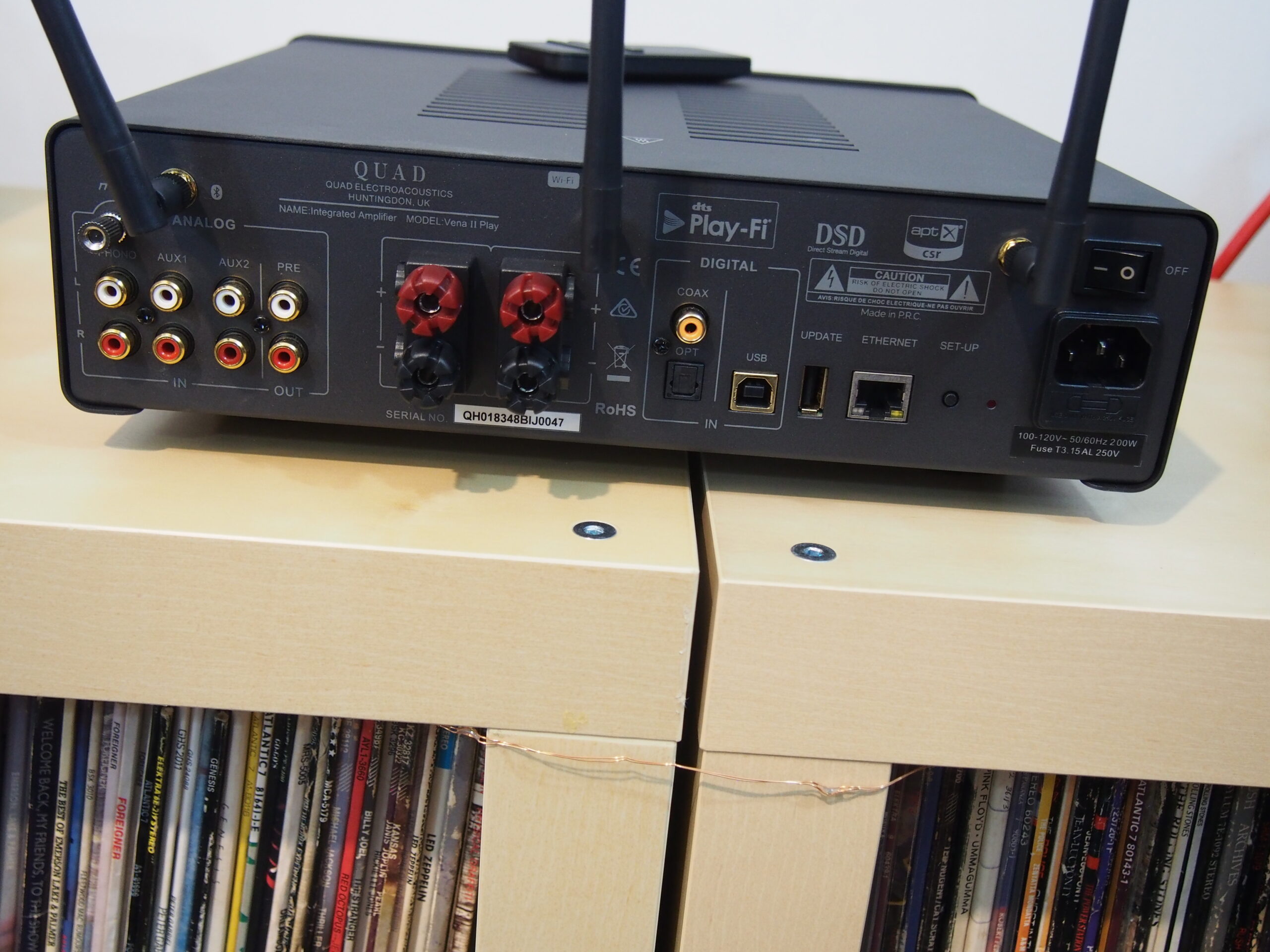
Starting with the optical input, running a Straight Wire TOS-LINK from my Pioneer Elite DV-C36, and playing the fully digital disc, Lyle Lovett and His Large Band, the Quad’s internal DAC immediately proves to be open and airy. During the spoken word portions of “Here I Am,” the slight reverb on Lovett’s voice is crystal clear, but more importantly, the background is inky black. No unwanted sound here in the least. Chicago native Francine Reed’s backing vocals come over the top beautifully. The stand-up bass in “Good Intentions” has a unique liveliness and realism that makes me go back and listen to the song twice in a row. It is just that good.
On After Hours, featuring Andre Previn, Joe Pass, And Ray Brown, “There’ll Never Be Another You,” opens with all three musicians in full gallop. The Vena II Play keeps right up. Piano, bass, and guitar are all well isolated here, with breathing room to spare. With this disc, also being a full digital recording, the Quad’s internal DAC never gives the impression of the music sounding overly digital or square. There is warmth and a live presence to this 1989 Telarc CD. While optical inputs generally tend to be somewhat less preferred than coaxial in the audiophile world, the Vena II Play’s optical input shows just how good one can be.
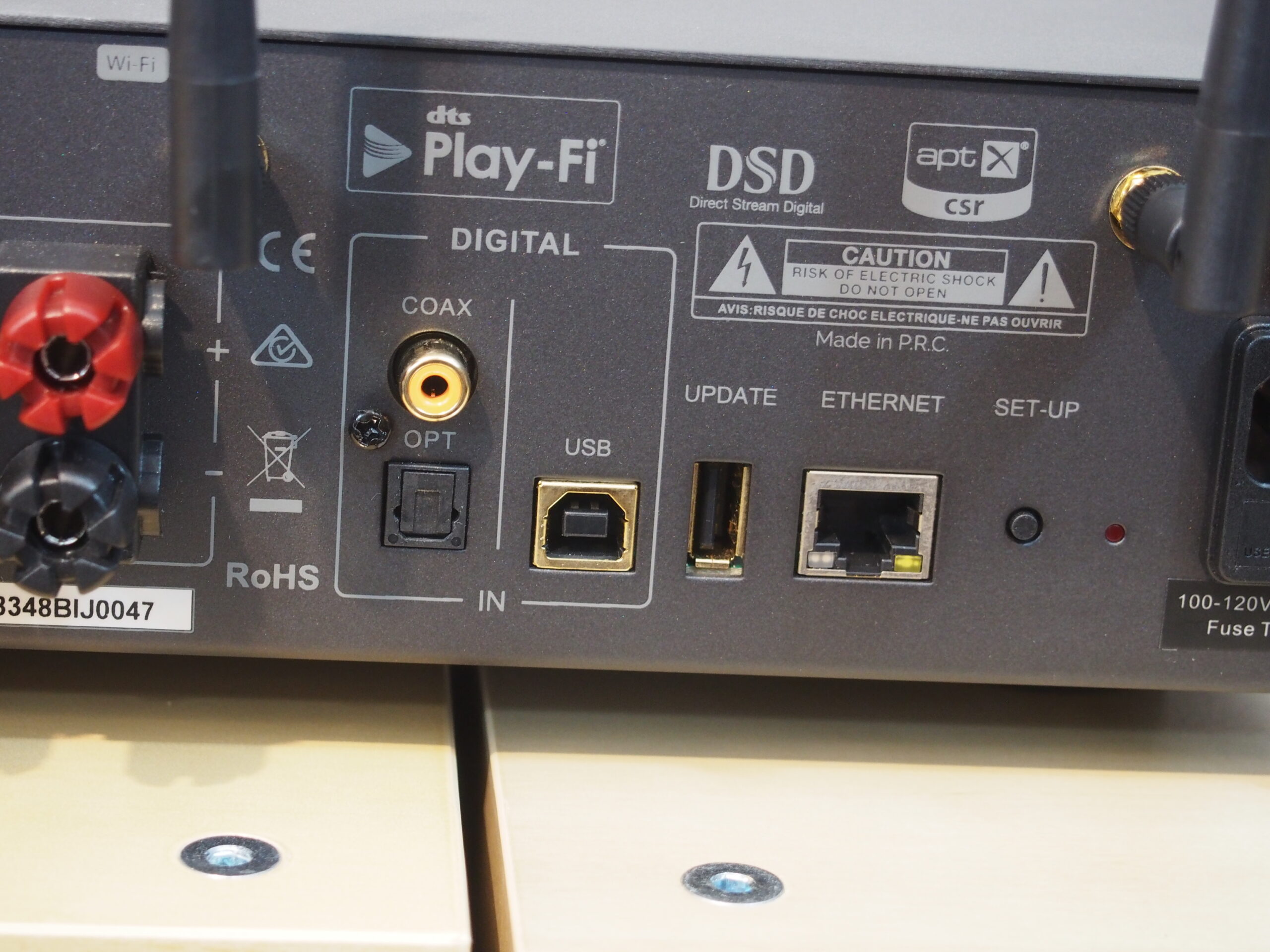
One click over to the coaxial input and Snow Patrol’s Eyes Open album begins pouring from the Pioneer Elite DV-47A through an Audio Art digital cable into the SP/DIF input on the Vena II Play. The Quad locks in and decodes the ones and zeros into a warm and wide soundstage. By the time “Chasing Cars” comes around, I am settling in and enjoying the music as much or more than analyzing it. After all, that’s what it really about, is it not? But I digress. There are huge dynamics, even at moderate volume. On “Shut Your Eyes,” there is luscious depth to the guitars, of which there are several layered and stacked.
Slipping in John Coltrane’s Giant Steps release instantly brings out the smoothness of the Quad’s internal DAC. There is a friendly and analog feel to this recording as soon as I hit play. As with many of Coltrane’s recordings, instruments are thrown far left and right in the mix here, and his own saxophone coming from the left channel flows brilliantly over the piano, also hard left, leaving bass and drums to the right. Each instrument has its own voice, isolated and clear.
But now for the big show. Connecting my HP laptop through an Audioquest Carbon cable into the Vena II Play’s USB input (also with a USBe perfect in the chain), I open Qobuz to Peter Gabriel’s Security album (24-bit/96kHz) and start from the first track. The Quad’s internal DAC interprets hi-res audio as breathlessly as many outboard DACs that I have heard matching its price point. “The Rhythm of the Heat” has a tremendous spaciousness to it that leaves lesser components far behind. There is dimensionality and depth and the track builds from distant whispers into a rolling furor. That continues in a back-and-forth play as “San Jacinto” paints a picture across the front of my listening room. Halfway through the song, the low end seems to come from below me. The machine-like precision of “I Have the Touch” further demonstrates the capabilities of the Vena II Play’s remarkable DAC. The song is punchy without being overpowering with percussion tight and pronounced.
I will stop here to mention that the end results emanating from my speakers also speak to the Vena II Play’s particularly strong performance as an integrated amplifier, which I will expound on more later. What we are left with is a brilliant marriage of digital and analog at work here, serving to bring an elevated experience into my music room. In this pause, it is important to mention that early in setting up the Vena II Play, I upgraded the standard power cord to an Audio Art power cable and found that the amplifier opened up and began to breathe much more, sounding increasingly airy with a bit more headroom.
Moving onto something more on the delicate side, like Jon Batiste’s “What a Wonderful World” (24-Bit/96kHz), the Quad does a marvelous job of translating the slow chords and single piano lines over droning tones. Batiste’s vocals are alive, in the room, with no separation between listener and artist. When the touch of strings fade in, they are ethereal and subtle.
The Phono Stage
No one-stop-shop of a component would be complete without addressing the ever-expanding vinyl market, and over the past few months, the Vena II play has demonstrated that is it has a quite capable MM phono stage. (Alas, MC users will still have to utilize an outboard phono preamp.) Plugging my Music Hall Turntable with Ortofon Blue stylus into the quad and lowering the needle on the MoFi classic rework of Supertramp’s Crime of the Century, side two begins with stunning clarity and detail with the phono stage doing justice to this pressing. Sibilance is crisp, dynamics are large, and the bass is firm. While the built-in phono stage does not rival the soundstage and imaging of a high-end outboard unit, it is one of the better integrated stages that I have heard in quite some time. For an audiophile not willing or ready to shell out additional cash for a standalone phono preamp, this is a satisfying experience.
Speaking of which, one of the most satisfying experiences in record collecting is owning a pristine copy of The Cars’ Heartbeat City. Here, on the title track, the Quad is a touch flat and reserved, again, not reaching the heights that an outboard phono stage provides, but still giving a very full, punchy bottom end. As before, dynamics and fidelity are powerful.
Auxiliary Inputs
Testing the analog capabilities, running SACD from the Pioneer Elite DV-47A through an Audio Art interconnect into one of the two aux inputs of the Vena II play, the Rolling Stones “Paint it Black” is downright staggering. The sheer life in Brian Jones’ sitar jumping from the right channel is remarkable. Bill Wyman’s bass pulsing up and down at the end of the track is huge. I go back and listen again now for the third time. This is the Quad now really showing its merit as pure integrated amplifier- preamp and amp doing their job, refreshingly well.
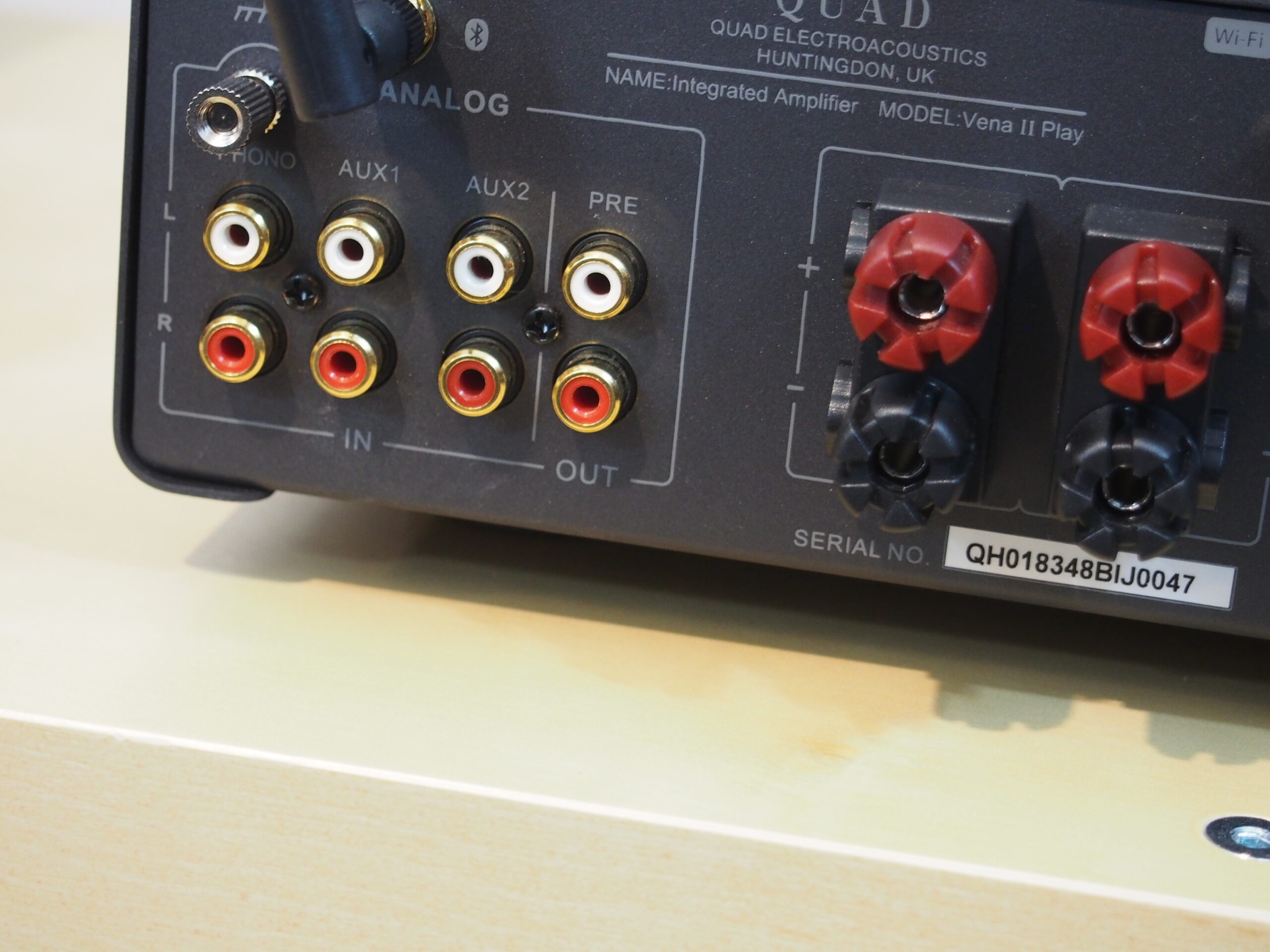
Bob Dylan’s SACD release of Infidels instantly has a holographic feel to it, wrapping sound around the listening space. Mark Knopfler’s guitar cuts over the top of the revolving circle of instrumentation. Pleasantly surprising, Dylan’s harmonica isn’t as harsh or shrill as I recall from growing up listening to it on 1970’s audio. The Vena II Play amplifies everything with smooth regard and balance.
So, remember when I told you there was a lot to review? There still is. Those antennae? The Bluetooth? Yes. There is still all that.
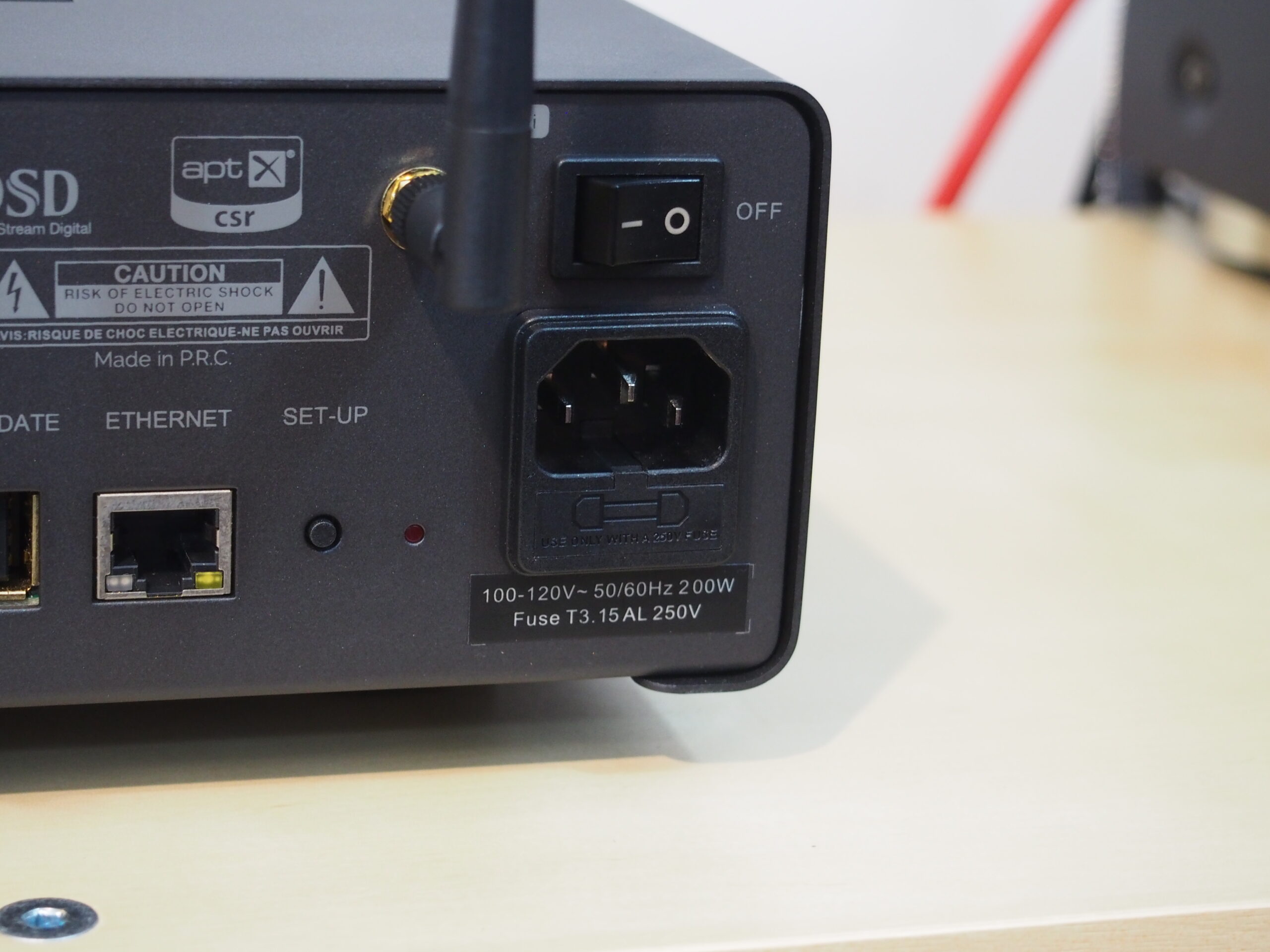
Pairing my Samsung Galaxy S8 with the Vena II Play was an absolute snap. A very simple pairing, and I’m instantly playing music wirelessly from my phone. This is very handy for those of us who store tunes in our mobile devices. It’s also great for those who use Qobuz as a mobile app or have friends who come over and share their music. The downside to many components and powered speakers that feature Bluetooth inputs is that they sound… well… wireless. I am pleased to tell you that the Quad’s Bluetooth sounds very pleasant. Streaming Qobuz from my phone and selecting Pat Metheny’s “America Undefined” (96kHz), I am getting a fairly full-fidelity performance from the almost magic connection here. Now, do not get me wrong, you are never going to convince a died-in-the-wool audiophile that this is a wired connection. However, as Bluetooth from phone connections go, this is really lovely.
The Wireless World
There is also the ability to connect the Vena II Play wirelessly to your network, along with an app to accompany it. The Vena II Play taps directly into your media server with no subscription required and can work with multiple hi-res subscription services. It also works with Spotify, SiriusXM, and Pandora. Quad offers the DTS Play-Fi software, downloaded from the Google Play Store, Amazon APP Market, or the Apple App Store, and gives control over network settings of the Vena II Play, taking the Quad far beyond a simple integrated amplifier.
Wrapping It Up
Quite simply, you could spend $1,495 on a basic integrated amplifier that sounds this good – I have heard them. And… you can also spend $1,495 on a DAC that sounds this good. To get both a great integrated amplifier and a fantastic DAC in one box, along with a phono stage, Bluetooth, and network capabilities is an absolutely stellar opportunity. They are all available in individual components, and then there is the Vena II Play, which is in a league all its own. For the audiophile who wants everything but is space conscious or just wants to be able to get it all in one box, the Quad Vena II play would the hi-fi bargain to look at. Highly recommended.
Associated Equipment
Pioneer Elite DV-47A CD player/SACD player
Pioneer Elite DV-C36 CD player
Music Hall MMF3.3 turntable with Ortofon Blue
Usher SD-500 speakers
Canton AS 22 SC subwoofer
Audio Art Cables Power 1 Classic power cable
Audio Art Cables IC-3 e2 interconnects
Audio Art Cables D1-SE2 digital coaxial cable
Audio Art Cables SC-5 e2 Cryo bi-wire speaker cables
Audioquest Carbon USB cable
Straight Wire TosLink cable